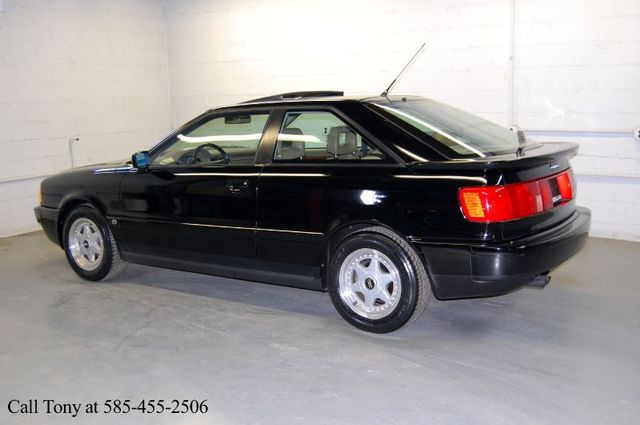I’d like to try a social experiment if you’ll allow me; I’d take an E30 M3 listing and say absolutely nothing about it. My hypothesis is that it wouldn’t matter; the car would still generate lots of comments both positive and negative, outlining both the strengths of the E30 and the rapid appreciation of the market. The convergence of factors that has resulted in the M3 market as we see it today is the evolution of not only a naturally occurring timeline coupled with a increase of personal wealth vis-a-vis the ownership group juxtaposed with those who actually ponder ownership. This, in turn, can be viewed as in part the skeuomorphic racing details of the M3 coupled with the natural analogue interface of the E30 chassis. Immersion in the marketplace has resulted in datafication as we try to quantify the various appeals of the models and even sub-models, while the scalability of the marketplace seems to utilize fuzzy logic – models constantly morphing in and out of vogue as the relative price of ownership fluctuates. Modularity in the E30 platform has not helped but convoluted the matter. Coupled with the emergence of internet fora the M3 is the first truly viral car. The rapid influx of various examples in order to take advantage of these previously stated confluence of factors has resulted in, ironically, crowdsourcing in an effort to elicit an explanation:
Author: Carter
There are very few race cars that I instantly fall in love with. A vast majority of them I see as very cool or with unique aspects, but often I’m left feeling as though I would do something – or many things – very different than the builder. But the moment I laid my eyes on this Rabbit, I fell instantly in love. Now, truth told I had already been thinking about an early Volkswagen race car – this time around, my thoughts lingered on some of the Scirocco SCCA racers. Hunkered down with all-too-awesome gold BBS magnesium wheels and a deep air dam, they just look spectacular to me. That feeling instantly transferred to this Rabbit. One of the earliest imported to the U.S., it’s the desirable Swallowtail model which looks much closer to the original Giugiaro design than the later U.S. built examples. There’s something that’s so pretty, so delicate about the early Golf/Rabbit design. It was refreshingly different from what Volkswagen had produced up to that point, but it was also purposeful in its design. With light weight and a dose of sport, these early Rabbits paved the way for what would become the performance arm of Volkswagen, centered around the A1 based GTi. But even before the GTi hit these shores there were plenty of racers that saw the opportunity to race the Rabbit on a budget. This early build was competitive right through the 1980s; in fact, I bet with the right driver it would still be close to the front today:
CLICK FOR DETAILS: 1975 Volkswagen Rabbit on eBay
5 CommentsLet’s be honest; going to the track is a bit of an addiction. Few make it out the other side without having at least contemplated heavy and expensive upgrades to their cars. The symptoms of the illness vary from patient to patient, but most exhibit similar characteristics; starting with a somewhat sporty road car, the owners quickly engage in a series of modifications that will make them “faster”. These modifications nearly always degrade the everyday usefulness of your road-going machine, and ultimately no matter how much you modify a street car, it will still be a compromised design. You simply can’t create a track weapon that is road-legal without some compromise. The result, then, is bobble-headed enthusiasts driving their barely-suspended, over cambered and too loud cars around looking – let’s be truthful – a bit of a fool. What’s a smarter option? Well, if you really want to drive faster on track, you find a slow car that someone has already made into a racer. First off, you’re getting into a more pure track car. They’re not road legal generally, so all of the goodies that make life bearable on the street are gone making them lighter. If the build was done right and well, you’re probably saving a lot of money, too. But the real benefit of getting a slower car is that you’re doing more of the driving – ask any racer, and most will say that extracting maximum performance from a slow car is more rewarding than allowing the computers in your GT-R to obliterate the pavement for you. Two of the most popular German cars to hit the track in are here today – the venerable E30 in 325is form, and the iconic Porsche 944. Which will hit the finish line first?
CLICK FOR DETAILS: 1987 BMW 325is on eBay
1 CommentFor me, it’s been a week of some unappreciated cars, and the Audi Coupe Quattro ranks up there as one of the most unappreciated Audis. But unlike the wild turbocharged wonders that were available in the rest of the world, the U.S. market received only the 7A inline-5 20 valve motor. Basically, it was a 16V Volkswagen motor with one more cylinder; with a 7,200 rpm redline, the sonorous 5-pot put out a respectable 164 horsepower. That wasn’t much less than the E30 M3 had and matched U.S. bound turbocharged Quattros – but the power delivery was such that the car didn’t feel fast off the line, and the weight didn’t help. The B3 was hefty, saddled with improved safety options like PROCON-10, anti-lock brakes and a stronger platform, it was also decidedly more luxury oriented with electric seats, sunroof, windows, air conditioning and even an electronic lock for the differential in the rear. It was the 1980s Audis all grown up, but the impression left in many enthusiast’s mouths was that it was a bit soft and a bit slow. Ironically, the 7A even gained a bad reputation amongst enthusiasts as an underpowered unit that lacked torque – but a look at the original power numbers prove it was the most powerful of the non-turbo, non-V8 cars Audi offered at the time. 1992 would see a switch to the B4 platform with the V6 power unit and the end of B3 production; slow sales and a high price meant the Coupe Quattro was removed from the U.S. bound lineup after only a reported 1,500 made it here. Despite their perceived lack of sport, the legendarily stout Coupe Quattros served many of their owners well and many are still kicking around. Only one, though, is in the condition of today’s example:
CLICK FOR DETAILS: 1991 Audi Coupe Quattro at Sutherland Auto Sales
12 CommentsIf the twin B4 Passat GLX VR6 Variants from the other day are a dwindling supply, the odds of running across a serviceable B3 Passat GL today are just about slim to none. While they were fairly expensive at the time, the 2.0 16V motored GL was seemingly a throw-away mid-level luxury car. It was quickly replaced at the top of Volkswagen’s food chain by the short-lived B3 GLX VR6 model – and in general, enthusiasts prefer those. That makes sense since they’re quicker than the early cars – but it also means that the odds of running across one of Volkswagen’s grill-less sedans or wagons is a rare occasion. It’s still neat to see them, though – even though they weren’t the fastest, best looking or best equipped Volkswagen, there were neat and innovative design elements that were incorporated into the B3. It was a huge leap forward from the outgoing Audi-shared B2 platform, a slick design which looked sportier, more angular and aerodynamic, and leagues more modern than the Quantum:





